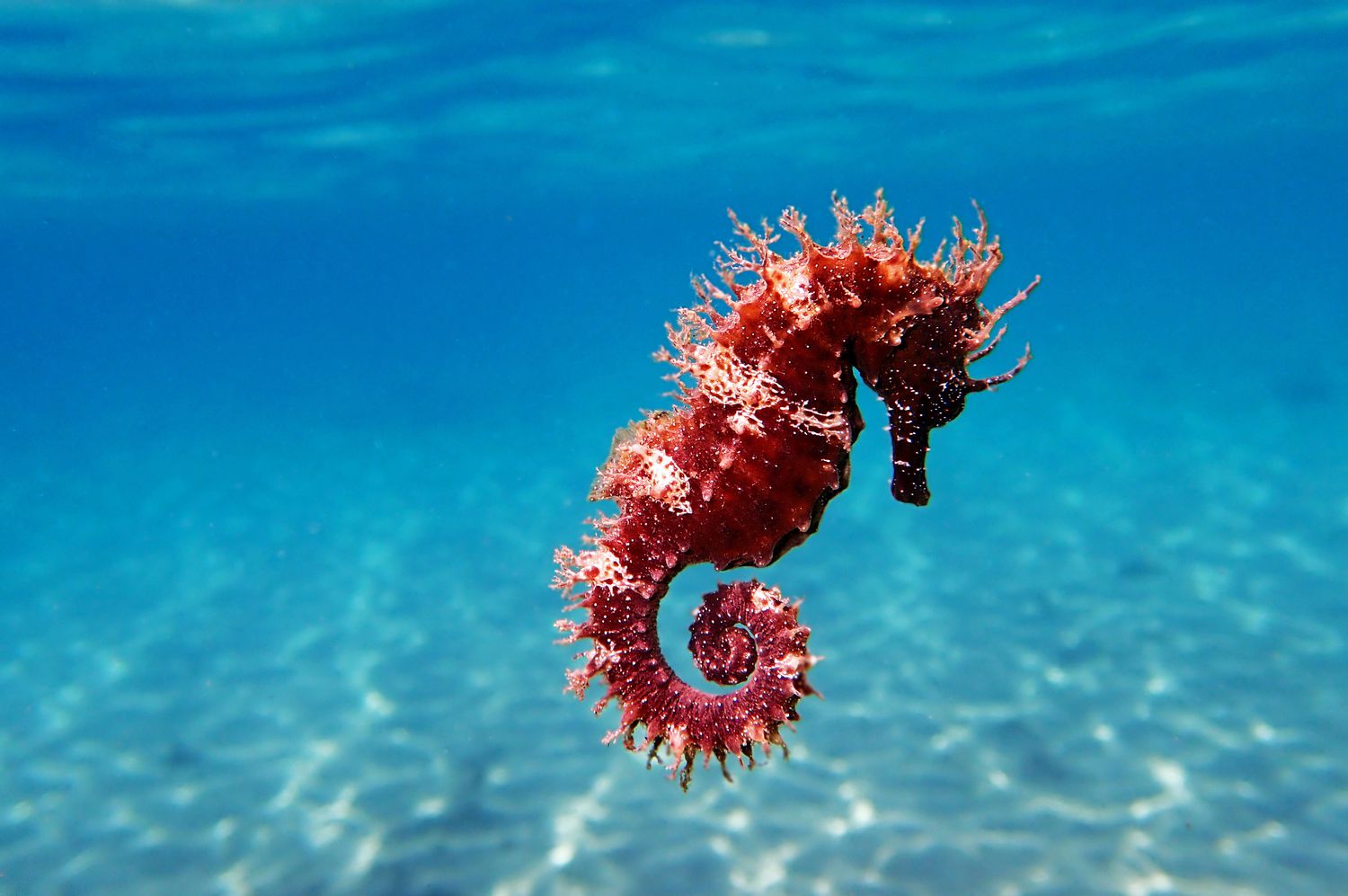

Around the planet, shallow tropical and temperate salt water between 45°S and 45°N is where seahorses are most commonly found. They are found in protected environments such coral reefs, mangroves, estuaries, and seagrass beds. In the Pacific Ocean between North and South America, four species can be found. Hippocampus erectus inhabits the Atlantic region from Nova Scotia to Uruguay. The Bahamas are home to H. zosterae, also referred to as the dwarf seahorse. In European seas, like as the Thames Estuary, colonies have been discovered. The Mediterranean Sea is home to three species: H. fuscus, H. hippocampus, and H. guttulatus, collectively known as the long-snouted seahorse (the sea pony). Males of these species establish territories, staying within 1 m2 (10 sq ft) of their environment, whereas females often wander over around 100 m2.
The anatomical evidence for seahorses' high degree of pipefish modification is corroborated by molecular, physical, and genetic evidence. But there is relatively little evidence of seahorses in the fossil record. Hippocampus guttulatus fossils, which date to the Lower Pliocene, or roughly 3 million years ago, and are found in the Marecchia River formation of the Rimini Province in Italy, are the best known and most extensively studied fossils. The earliest known seahorse fossils are from the coprolitic stratum of Tunjice Hills, a middle Miocene lagerstätte in Slovenia, and belong to two species that resemble pipefish, H. sarmaticus and H. slovenicus.